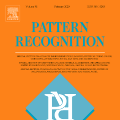Pattern recognition is a fundamental task in continuous sensing applications, but real-world scenarios often experience distribution shifts that necessitate learning generalizable representations for such tasks. This challenge is exacerbated with time-series data, which also exhibit inherent nonstationarity--variations in statistical and spectral properties over time. In this work, we offer a fresh perspective on learning generalizable representations for time-series classification by considering the phase information of a signal as an approximate proxy for nonstationarity and propose a phase-driven generalizable representation learning framework for time-series classification, PhASER. It consists of three key elements: 1) Hilbert transform-based augmentation, which diversifies nonstationarity while preserving task-specific discriminatory semantics, 2) separate magnitude-phase encoding, viewing time-varying magnitude and phase as independent modalities, and 3) phase-residual feature broadcasting, integrating 2D phase features with a residual connection to the 1D signal representation, providing inherent regularization to improve distribution-invariant learning. Extensive evaluations on five datasets from sleep-stage classification, human activity recognition, and gesture recognition against 13 state-of-the-art baseline methods demonstrate that PhASER consistently outperforms the best baselines by an average of 5% and up to 11% in some cases. Additionally, the principles of PhASER can be broadly applied to enhance the generalizability of existing time-series representation learning models.
翻译:暂无翻译




